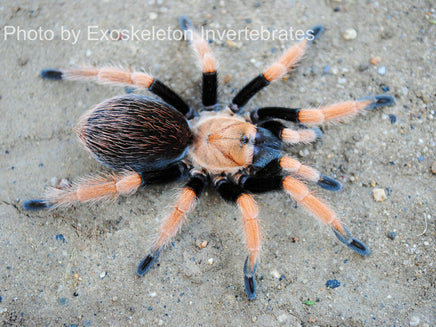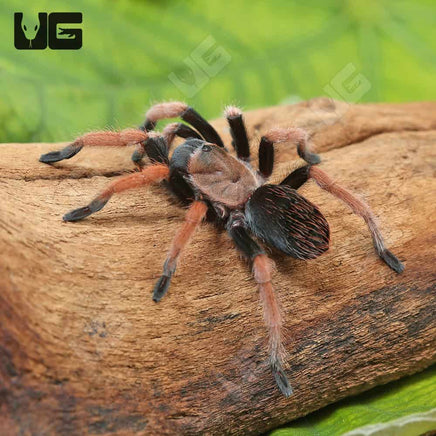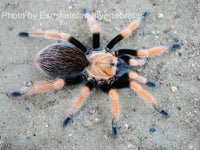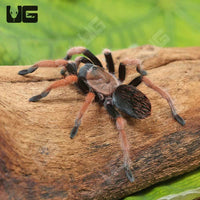| 📌 Special Notices |
| SEO Page Title |
Mexican Blood-Leg Tarantula | Aphonopelma bicoloratum |
| Meta Description |
Mexican Blood-Leg Tarantula for sale—super docile, colorful, and beginner friendly. A high-end Aphonopelma that doesn’t kick hairs. |
| Care & Setup Videos |
I strongly recommend checking out my YouTube channel for care, setup, feeding, and show-and-tell videos so you can see exactly how we keep and feed our tarantulas:
▶ Visit Urban Tarantulas on YouTube
|
| 🌡️ Care Details |
| 🌡️ Temperature |
75–80°F (24–27°C). Warmer temps encourage slightly faster growth. |
| 💧 Humidity |
~50%. Keep substrate mostly dry with a lightly overflowed corner if desired. |
| 🏠 Housing |
| Babies |
1–4 oz deli cup with dry substrate and a starter burrow. |
| Juveniles |
Enclosure about 2× leg span with deeper substrate. |
| Adults |
Terrestrial enclosure with ample floor space and 3–4"+ of compactable substrate. |
| 🍽️ General Diet |
| Crickets and roaches (Dubia, Red Runner, Lobster, Madagascar Hissing). Babies take baby roaches or small crickets. If prey is too large, pre-kill it. Remove leftovers promptly. Very large specimens may have an occasional pinky or feeder lizard—extremely sparingly. |
| 📚 In-depth Facts |
| 🕷️ Scientific name |
Aphonopelma bicoloratum |
| 📛 Common name(s) |
Mexican Blood-Leg Tarantula |
| 📍 Locale |
Mexico |
| 🏷️ Category |
Terrestrial; burrow-oriented |
| 📏 Size |
~5–6" DLS |
| 🪶 Urticating hairs |
They do not kick urticating hairs. |
| ⏳ Growth rate |
Slow |
| 🧭 Life span |
Females 20–25+ years / Males 6–8 years |
| 🎯 Recommended levels |
Beginner and all levels |
| 🎁 Follow me on social media |
🎁 Follow me on social media and receive an additional freebie*
*Email me after you follow to let me know you’re a follower so I can include it.
Instagram YouTube Palmstreet Facebook TikTok
|
| ⚠️ Safety Disclaimer |
Safety Disclaimer: Experiencing a tarantula bite is an extremely rare occurrence, and it's important to note that there have been NO recorded fatalities due to a tarantula bite. The venom potency varies across species, with Old World tarantulas generally having stronger venom than their New World counterparts. Within the Old World category, the Poecilotheria genus is known for having particularly potent venom.
It's crucial to approach tarantulas with respect and understanding. If you happen to get bitten, which is unlikely, the key is to stay calm. In most cases, the discomfort is superficial and subsides within a few minutes to a few hours. However, bites from species with more potent venom may result in symptoms lasting up to a week. Remember, larger tarantulas tend to have more venom than smaller ones.
Please be aware that I cannot assume responsibility for bites. Tarantula handling should be done at your own risk. In my 13 years of experience with these creatures, I have only been bitten once, by a species with highly potent venom. While the experience was painful, the symptoms had completely disappeared after a week.
Handle tarantulas responsibly, and always prioritize your safety and the well-being of the tarantula. |





